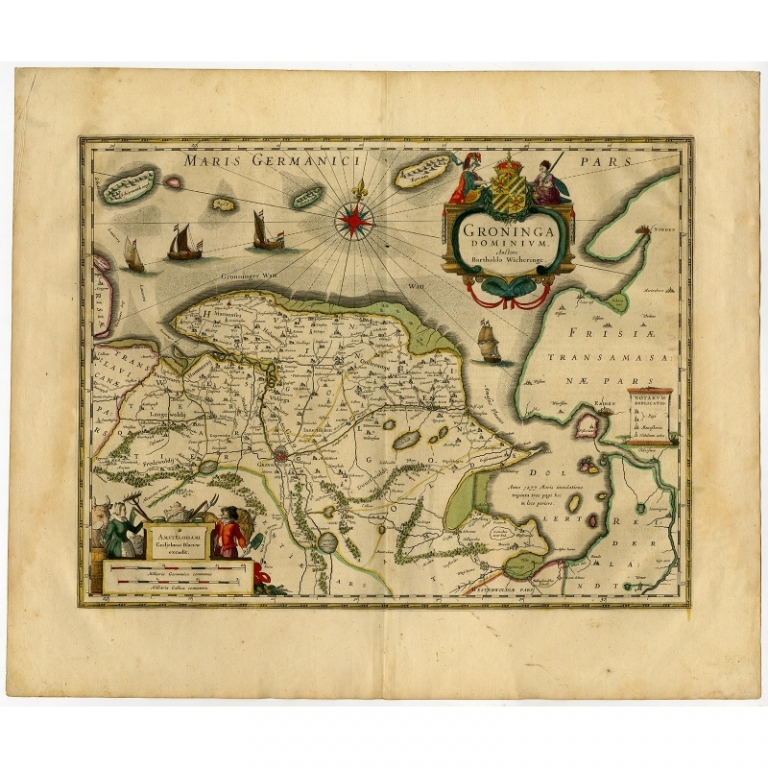FREE
WORLDWIDE
SHIPPING
No products
PCT-56387
Antique Map of Groningen by Blaeu (c.1635)
- Condition: Good, given age. Original middle fold, as issued. Large vague dampstain in left and right margin. Light soiling. More recent hand coloring. General age-related toning and/or occasional minor defects from handling. Please study scan carefully.
- Date: c.1635
- Overall size: 59.8 x 50.3 cm.
- Image size: 49 x 37.8 cm.
Worldwide
shipping

Description: Antique print, titled: 'Groninga Dominium.' - (Map of Groningen.) Copper engraved map of the Groningen province min the Netherlands. Two cartouches, compass rose and ships on the sea. After preliminary work by Ubbo Emmius (1547-1625), the Groningen councelor Barthold Wicheringe (1580-1652) produced in 1616 a large overview map of the Province of Groningen. This map became the new standard and was the model for most Groningen maps made until into the 18th c. Published in Amsterdam by W. Blaeu ca. 1635.
Artists and Engravers: Publisher: W. Blaeu. Cartographer: Barthold Wicheringe. Carthographers: Ubbo Emmius (1547-1625) and Barthold Wicheringe (1580-1652), who was a counselor from Groningen. Publisher: Willem Janszoon Blaeu was born 1571 in Alkmaar. He was trained from 1594 to 1596 by the famous danish astronomer Tycho Brahe. 1599 he went to Amsterdam and founded a business as globe maker. Later he started producing map and sea charts, including his first world map in 1605. In 1633 he was appointed Hydrographer for the Dutch East India Company (VOC). His most famous work was the "Atlas Novus" or "Theatrum Orbis Terrarum sive Atlas Novus" of 1635, which was published until 1655 in total six volumes. After Blaeu's death in 1638 his sons Joan and Cornelis continued the businees and finished the "Atlas Novus" and started an even larger work, the "Atlas Maior", which reached 12 volumes. In 1672 a fire destroyed the printing house and a year later Joan died. Some of the surviving plates where bought by F. de Wit and Schenk & Valk. The business was closed finally in 1695.



